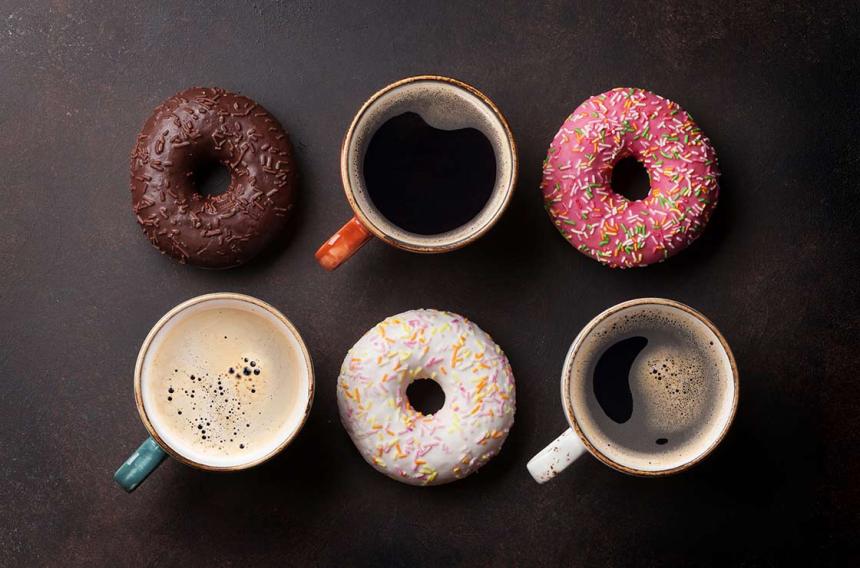Caffeine May Be Triggering Your Sweet Tooth

Coffee and donuts go together. The pairing even inspired the name of worldwide donut shop and coffeehouse – Dunkin’ Donuts. Why does coffee go so well with donuts, as well as coffee cake and pie?
A recent study published in the Journal of Food Science provides one theory: The caffeine in coffee stimulates us while dulling our taste buds in the process. This makes foods and drinks seem less sweet, triggering a craving for sugar, according to Cornell University researchers. And your altered perception of taste lasts as long as the effects of the caffeine.
“This is just one more reason to watch your caffeine intake,” says Dr. Bernard Kaminetsky, medical director, MDVIP. “There are health benefits to drinking caffeinated coffee, but moderation is the key.”
When you consume caffeine, it binds to adenosine receptors in the brain. Adenosine is a brain chemical and when it binds to adenosine receptors, it slows down nerve cell activity, causing drowsiness. It also enhances our ability to taste sweets. However when caffeine binds to the adenosine receptors instead, it causes the nerve cells to speed up and blunts our sensation for sweets flavors, researchers suggest.
Cornell researchers set up a blind study that involved two groups. One group drank decaffeinated coffee that had 200 mg of caffeine added to it in a laboratory (to simulate a cup of strong caffeinated coffee) and the other group drank just decaffeinated coffee. Equal amounts of sugar were added to the coffee in both groups. After subjects drank the coffee, researchers asked them questions and noted that:
- Caffeinated coffee drinkers rated their coffee as less sweet than decaffeinated coffee.
- Caffeinated and decaffeinated coffee drinkers reported the same level of alertness.
- None of the coffee drinkers were able to guess if they had drunk caffeinated or decaffeinated coffee.
More than fifteen minutes after finishing their coffee, subjects consumed a sucrose solution. And caffeinated coffee drinkers rated the sucrose solution as less sweet than the decaffeinated coffee drinkers.
Previous research has shown when the ability to taste sweets is chemically blocked, people experience sugar cravings. Researchers attribute the alertness among the decaffeinated coffee drinkers to a placebo effect of drinking coffee.
“Most of my patients only think of coffee, tea, cola and chocolate as sources of caffeine. But there are many unexpected sources of caffeine,” explains Kaminetsky. Here are a few:
Decaffeinated coffee is a better choice than caffeinated coffee if you’re watching your caffeine intake, but still contains caffeine. Most brands range between 8.6 and 13.9 mg for an 8-ounce cup. Caffeinated coffees generally have between 95 mg and 200 mg of caffeine.
Non-cola sodas can also be a source of caffeine. Some brands of citrus, root beer, cream and orange flavored sodas contain various amounts of caffeine.
Ice cream can contain caffeine if chocolate or coffee are used as ingredients.
Weight loss pills add caffeine because of its metabolism boosting properties. Weight loss pills can have as much as 310 mg of caffeine per serving.
Pain relievers commonly have caffeine in them, as caffeine seems to improve the effectiveness of pain killers. Over-the-counter pain relivers usually have between 65 mg and 250 mg of caffeine per pill.
Discuss your caffeine intake with your doctor, particularly if you’re using weight loss pills or pain relievers. As part of the MDVIP Wellness Program, your doctor can customize a wellness plan for you and your needs. Don’t have an MDVIP-affiliated doctor? MDVIP has a nationwide network of physicians? Find one near you and begin your partnership in health »


